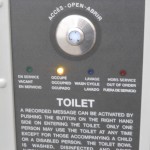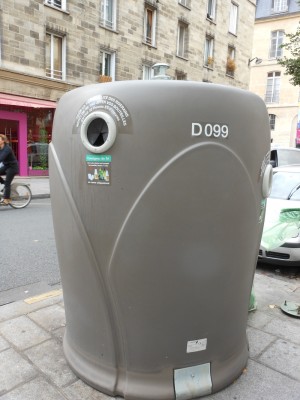Where Do Tourists “Go?”
Let’s say you’re visiting Key West and are window shopping on upper Duval and suddenly nature calls. Where are you going to be able to use a bathroom without ordering a sandwich at a local restaurant?
The Keys claim to be a tourist destination but neither the county nor the cities provide some of the services that tourists – and local residents – may need.
So what do people do? It’s not at all uncommon to see someone urinating in the mangroves on the side of the Overseas Highway. At the bus stop in Marathon, where the buses for Florida City and for Key West depart, some of the riders do the same in the shrubbery or on the side of the building behind the stop.
Publix supermarkets have bathrooms for their customers as do CVS and Walgreens. Before the visitor center was opened in Florida City many travelers slipped into the bathroom at McDonald’s without buying anything.
However, there doesn’t seem to be any push by either the county or the cities to provide these necessities in the Keys. While Marathon, for example, does have bathrooms at its parks, it has been slow to do the same at what is referred to as Sunset Park near the Old Seven Mile Bridge. Key West has bathrooms on Mallory Square but nowhere else in Old Town.
 And yet some tourist destinations do provide appropriate facilities. Recently we visited Paris, which gets 70 million visitors a year, and discovered that kiosks that enclose free bathrooms are scattered around the city. Push a button, the door opens and inside is a clean toilet and sink. An indicator on the entry control shows whether the facility is in use or not or even whether it is being cleaned. The instructions are in three languages and there’s also a recorded message inside instructing people about how to use the system.
And yet some tourist destinations do provide appropriate facilities. Recently we visited Paris, which gets 70 million visitors a year, and discovered that kiosks that enclose free bathrooms are scattered around the city. Push a button, the door opens and inside is a clean toilet and sink. An indicator on the entry control shows whether the facility is in use or not or even whether it is being cleaned. The instructions are in three languages and there’s also a recorded message inside instructing people about how to use the system.
We saw the kiosks around major tourist attractions but also in many other areas. The free restrooms (toilettes) have a self-cleaning feature that ensures they don’t end up becoming littered and smelling bad like the port-a-potties that one sees at construction sites or at larger events in the United States.
In fact, the bathroom kiosks in Paris were much nicer and also considerably larger than the bathrooms on our flight home.
Every morning we saw a small vehicle stop at each kiosk and service it. Clearly tourists are important in Paris and the city makes sure that these visitors can access the services they require.
 We also saw trash barrels situated at most corners in Paris and large, green recycling bins where visitors can put their empty bottles and cans as well as other recyclables. In Marathon, I counted a total of two trash barrels between Vaca Cut and Sombrero Beach Road. There are only a few recycling receptacles at Sombrero Beach and a couple of those are in inaccessible places. This lack of receptacles makes it tough for visitors and residents who want to be responsible about disposing of their trash.
We also saw trash barrels situated at most corners in Paris and large, green recycling bins where visitors can put their empty bottles and cans as well as other recyclables. In Marathon, I counted a total of two trash barrels between Vaca Cut and Sombrero Beach Road. There are only a few recycling receptacles at Sombrero Beach and a couple of those are in inaccessible places. This lack of receptacles makes it tough for visitors and residents who want to be responsible about disposing of their trash.
Perhaps the county should use TDC money to construct restroom facilities up and down the Keys rather than spending funds on oft-repeated events that are making money. Or on very high-priced infrastructure. A couple of the state parks have installed composting toilets and waterless urinals making expensive plumbing unnecessary.
Tourism isn’t just about making money off visitors; it’s also about treating them like guests. In the highly competitive tourism market Key West and the rest of the Keys need to do more than rely upon our unique location to attract tourist dollars. We need to give something back.

I agree that we could use such a facility, in fact several, in Key West. I am embarrassed that in the U.S. our cities do not provide such facilities. I do not think we have the most disgusting and deparaved homeless people in the world BUT I wonder what our homeless people would do to those public facilities if they existed in this country! I guess it is worth a shot. Of course we have to have people to maintain these inits regularly-we also have to ensure that the homeless do not think that once they get into one of these facilities then it is theirs for the night. I wonder if there is a way to keep that from happening? My experience with what the homeless population has done on College Rd. when left to their own designs makes me think a free or even nominally charged public facility such as this would become the sole abode for the homeless in short order, possession being 9/10s of the law. Let’s see! Maybe after 20 minutes we could have a system that would automatically fill the unit with toxic gas or even foam for 5 minutes and then suck it back out? Any suggestions?
I often wonder if we are too “prudish” to put the necessity for public toilets front and center in a town that wants to attract tourists. TDC money is well spent helping to bring the tourists in by supporting events here. Now we need to treat them as guests instead of invaders. The homeless issue also needs to be addressed as a community but so far the community doesn’t seem to have the will to do so. BOTH need attention. And they are related issues.
Both Pedrosan and Carl make good points, and I’ll take them both out to lunch, my treat, if they take the trouble to arrange it, to dicsuss our ideas at length (Welber, you are of course invited, but I have the impression you “don’t get out much”) .
But the additional issue I have to raise is our disability rules. Look at our toilet at the Bight. It cost hundreds of thousands of dollars extra to make it disabled accessible. It works, but how silly. I don’t know how this runs in nations that actually function in Europe.